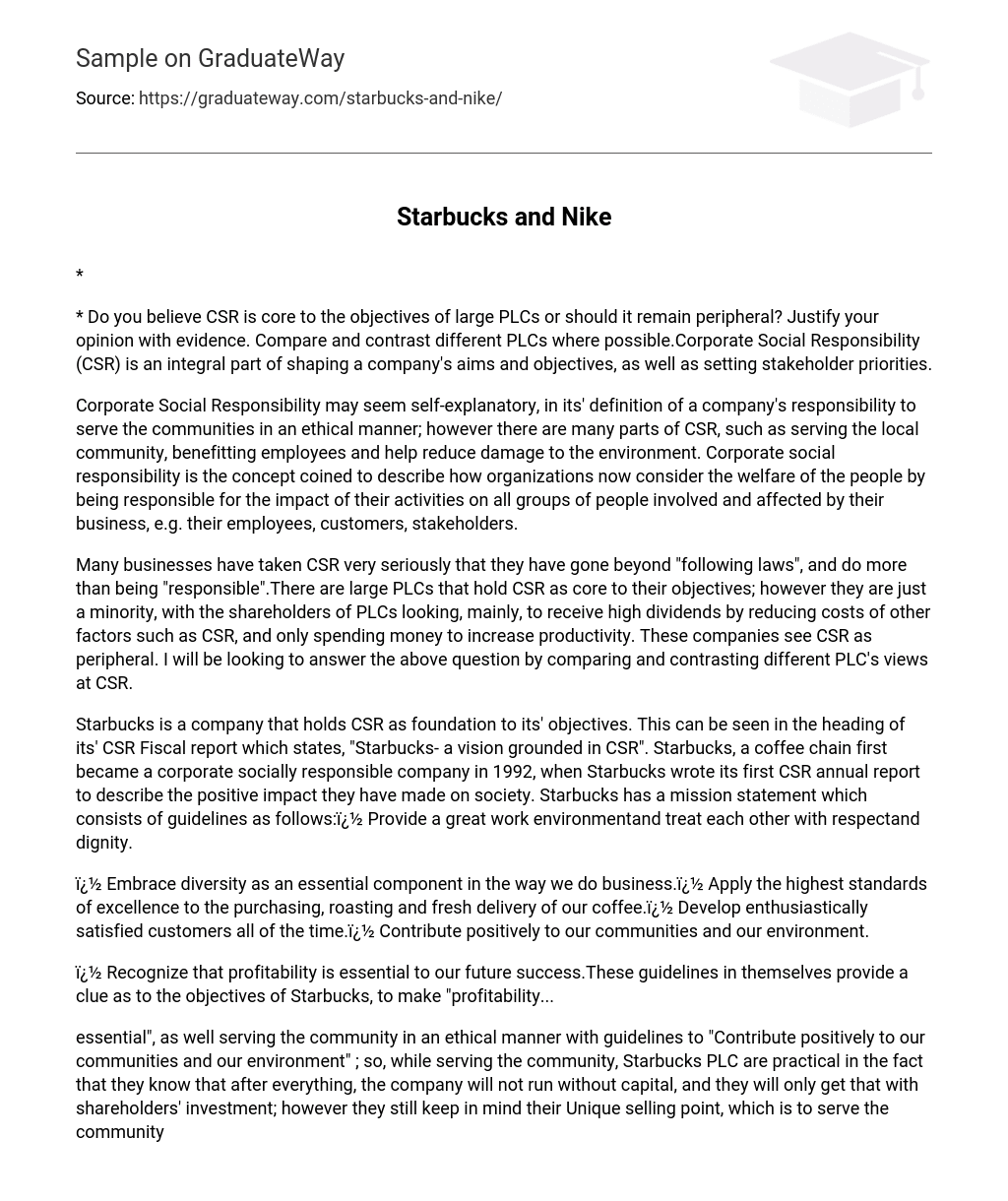Corporate Social Responsibility (CSR) is an essential factor in determining a company’s goals and priorities for stakeholders. While it may seem simple, CSR includes multiple elements like community service, employee benefits, and environmental preservation. The concept of corporate social responsibility involves organizations acknowledging their actions’ impact on various groups such as employees, customers, and stakeholders to ensure their welfare.
Corporate social responsibility (CSR) is embraced by many businesses, going beyond mere compliance with laws and responsibility. However, it is important to note that only a minority of large publicly listed companies prioritize CSR as a core objective. Shareholders of these companies primarily seek to maximize dividends and reduce costs, which may include those associated with CSR. Consequently, they only invest in measures that improve productivity and consider CSR as a secondary concern. This analysis aims to examine the different perspectives on CSR among different publicly listed companies.
Starbucks places a strong emphasis on CSR as a core aspect of its objectives. This is evident from the heading of its CSR Fiscal report, which highlights Starbucks’ vision rooted in CSR. In 1992, Starbucks became a socially responsible corporation and published its initial CSR annual report outlining the significant contributions it had made to society. The company’s mission statement includes the following guidelines:
- Provide a great work environmentand treat each other with respectand dignity.
- Embrace diversity as an essential component in the way we do business.
- Apply the highest standards of excellence to the purchasing, roasting and fresh delivery of our coffee.
- Develop enthusiastically satisfied customers all of the time.
- Contribute positively to our communities and our environment.
- Recognize that profitability is essential to our future success.
Starbucks aims to achieve profitability while also making a positive impact on the community and the environment. They recognize the importance of shareholders’ investment for the company’s financial success. However, they also prioritize their unique selling point of serving the community through strong community relations and environmental initiatives.
However, prioritizing customer satisfaction, employee well-being, and environmental responsibility may lead to several immediate disadvantages. For example, compensating employees based on their hard work can be more costly compared to minimizing expenses by paying them just above the minimum wage. According to research conducted by the thinktank, Starbucks follows this approach as they provide greater support to their farmers in Africa and Mexico compared to Fairtrade (refer to source E). Additionally, Starbucks organizes numerous community events, which also depletes their capital and can potentially reduce short-term profit. Nike has become a target for various activists and journalists globally, functioning as a symbolic representation of businesses in society.
In regards to Nike, the concerns pertain to human rights and working conditions in factories located in developing nations. Despite facing ongoing allegations, Nike has constructed a well-thought-out reaction backed by reporting on its corporate website. The company now prioritizes improving conditions in contracted factories, striving for carbon neutrality, and increasing access to sports for youths globally. Nevertheless, the criticism persists.
In 1997, Nike faced severe backlash for allegedly subjecting workers to deplorable conditions in sweatshops, leading to a significant decline in sales. The graph displayed below is extracted from the Nike Fiscal report of 2001, illustrating the impact of this negative publicity. The data reveals that although Nike operated as a non-corporate social responsibility (CSR) company in 1997, they still managed to sell a substantial quantity of products due to the lack of public awareness regarding Nike’s position on sweatshop labor within their supply chains.
However, sales almost halved when the public demanded accountability from businesses that lack corporate social responsibility. Nike had to acknowledge the decline in sales and the only solution was to rebrand and make amends for their errors. In their 2001 Fiscal report, Nike admitted that their international labor policies caused negative publicity in 1997, resulting in a significant impact on sales and revenue. To overcome this negative perception, Nike implemented stricter requirements for employee age in overseas factories.
The text suggests that companies that have unethical guidelines face major long-term consequences, as seen in the case of Nike. Nike’s sales plummeted by almost half, indicating a loss of customer trust in their products and resulting in a significant decrease in income due to customers uncovering Nike’s unethical practices. Furthermore, Nike had to invest hundreds of millions in rebranding itself as a company that prioritizes people. As a result of this corporate social responsibility (CSR) rebranding, both Nike and Starbucks now reap numerous long-term advantages, including having more motivated employees who receive higher wages, ultimately leading to increased productivity.
The government is now assisting CSR companies in setting a positive example for other businesses. This allows both the government and other companies to have confidence in entering into business agreements with them, knowing that they are ethical companies. It is evident that making CSR a central focus for a company’s goals ultimately leads to increased sales. Companies that rely on sales to the general public, in particular, need to enhance their reputation as ethical entities. This is crucial because, as demonstrated by case studies of Nike and Starbucks, while profit may be the ultimate objective, short-term goals must be centered around CSR to satisfy the majority of stakeholders and drive production and sales.





